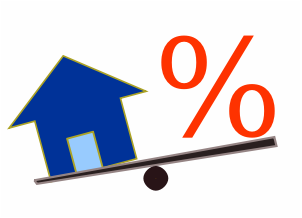
Ever since the housing market collapsed around 2007, many lenders (and borrowers) went into somewhat of a crisis-mode. There has been a significant drop in refinanced loans, and home sales in the U.S., though rising gradually, are still lower than they have been in years past. Lenders were reluctant to approve mortgages as borrowers were defaulting left and right as a result of any number of unfortunate financial circumstances—whether due to mismanagement on their own part or on the part of the entities from whom they’d borrowed to begin with. People on both sides of the banker’s desk were generally skittish about real estate financing, and tightened lending restrictions were a large contributing factor. High-quality “qualified residential mortgages” often required a minimum 20% down payment, which made it significantly more difficult for lower-income families or those with weak credit to buy a home. In order to be flexible and accept a lower down payment, according to a proposal in the original 2010 Dodd-Frank Wall Street Reform and Consumer Protection Act, banks would have to assume 5% of that mortgage’s risk.
Last week, however, the Federal Deposit Insurance Corporation (FDIC), the Office of the Comptroller of the Currency and the Federal Housing Finance Agency (FHFA) agreed to relax the down payment obligation, so that consumers would no longer have to cough up 20% at the outset. A lender does, however, need to verify that borrowers have a favorable debt-to-income ratio, so that they can be reasonably counted upon to repay their loans. (If the borrower’s debt threshold is 43% or lower, the bank can similarly avoid having to take on that 5% risk, as well.) According to the FHFA, some mortgage companies—such as Fannie Mae and Freddie Mac—may even guarantee loans with down payments as low as 3%.
There are those who are critical of the federal government’s seemingly increasing involvement in the housing system; some fear that the recent officially-sanctioned mortgage leniency might bring about the same bubble-to-bust pattern that we saw after the lax borrowing and lending practices caught up with the housing market and brought it crashing down less than a decade ago. FDIC chairman Martin Gruenberg (as reported in the Wall Street Journal), however, is confident that the new regulation “’promotes compliance’ and minimizes costs for lenders by providing a unified federal standard for mortgage lending.” Likewise, Julia Gordon, director of housing policy at the liberal Center for American Progress confirmed that research has established that “low- down-payment loans to lower-wealth borrowers perform very well if the mortgages are well-underwritten, safe and sustainable.”
The new mortgage standard is scheduled to go into effect this time next year, and its influence on the economy will be evaluated regularly thereafter. According to a statement released by the FHFA, they believe that the implementation of this policy “means more clarity for lenders and encourages safe and sound lending to creditworthy borrowers.”
Last week, however, the Federal Deposit Insurance Corporation (FDIC), the Office of the Comptroller of the Currency and the Federal Housing Finance Agency (FHFA) agreed to relax the down payment obligation, so that consumers would no longer have to cough up 20% at the outset. A lender does, however, need to verify that borrowers have a favorable debt-to-income ratio, so that they can be reasonably counted upon to repay their loans. (If the borrower’s debt threshold is 43% or lower, the bank can similarly avoid having to take on that 5% risk, as well.) According to the FHFA, some mortgage companies—such as Fannie Mae and Freddie Mac—may even guarantee loans with down payments as low as 3%.
There are those who are critical of the federal government’s seemingly increasing involvement in the housing system; some fear that the recent officially-sanctioned mortgage leniency might bring about the same bubble-to-bust pattern that we saw after the lax borrowing and lending practices caught up with the housing market and brought it crashing down less than a decade ago. FDIC chairman Martin Gruenberg (as reported in the Wall Street Journal), however, is confident that the new regulation “’promotes compliance’ and minimizes costs for lenders by providing a unified federal standard for mortgage lending.” Likewise, Julia Gordon, director of housing policy at the liberal Center for American Progress confirmed that research has established that “low- down-payment loans to lower-wealth borrowers perform very well if the mortgages are well-underwritten, safe and sustainable.”
The new mortgage standard is scheduled to go into effect this time next year, and its influence on the economy will be evaluated regularly thereafter. According to a statement released by the FHFA, they believe that the implementation of this policy “means more clarity for lenders and encourages safe and sound lending to creditworthy borrowers.”
